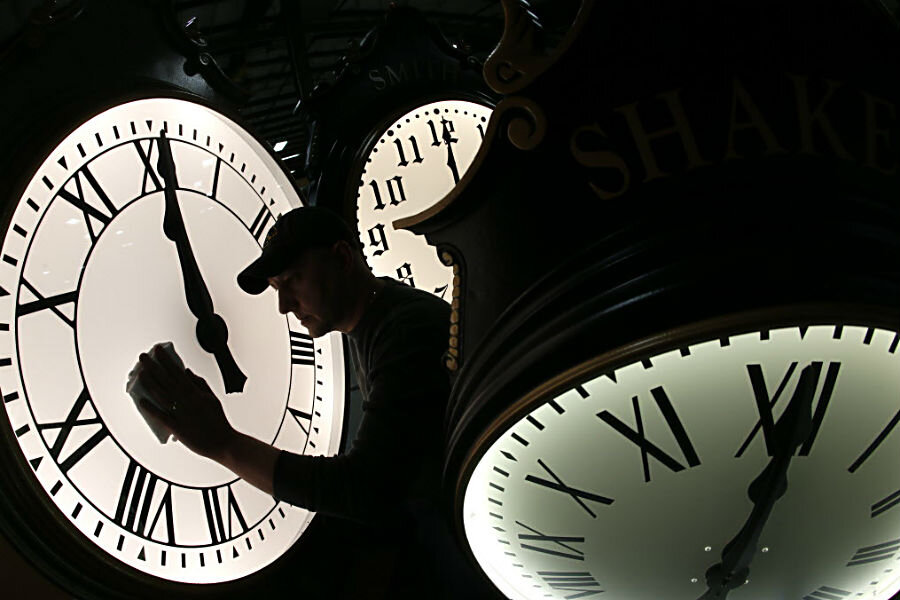Leap second? Why June 30 will be one second longer
Loading...
Tuesday may feel a little longer than usual, thanks to an extra "leap second." Instead of changing from 23:59:59 on June 30 to 00:00:00 on July 1, the last minute of June will be 61 seconds long.
Scientists have added this slight extension to adjust to the Earth's rotation slowing down due to tidal forces between the Earth and the moon.
In 1820, a solar day was determined to be exactly 86,400 seconds of atomic time, and we still measure it that way. But since the day has gotten longer, a day is now 86,400.002 seconds in astronomical time. Over the course of a year, that extra .002 seconds per day adds up to nearly 1 second, reports fromquarkstoquasars.com.
In order to make up the time difference between atomic clocks and the time standard based on the rotation of the Earth on its axis with respect to the sun, called Universal Time 1 (UT1), scientists add an extra "leap second" when necessary.
Leap seconds were first introduced in 1972, by which point atomic clocks and astronomical clocks were already off by ten seconds. Researchers added all ten seconds at once in 1972 to make up for the difference, and have continued to add occasional seconds accordingly since.
The frequency of leap seconds varies, as the world's rotation is constantly changing. The most recent leap second was three years ago on June 30, 2012, but in the early 1980s, time scientists were adding them every year.
While most people won't even notice the additional second, it could have a major impact on companies relying on computer systems. About 10 percent of large-scale computer networks will encounter hiccups due to the leap second, Geoff Chester, public affairs officer for the U.S. Naval Observatory in Washington told Bloomberg News. In 2012, the extra second caused several websites including Reddit, Gawker Media, and Mozilla, to crash.
The cost and risks of adjusting or turning on and off important systems has led to some backlash against the practice of leap seconds, with some calling for its abolition. The future of the practice is in the hands of the International Telecommunication Union (ITU), a specialized agency of the United Nations which addresses issues in information and communication technologies. The ITU plans to discuss and vote on the issue in November.
In the US, The Christian Science Monitor notes, precisely tracking time began with the railroads.
Until the advent of atomic clocks, "the length of a second was not well defined," says John Lowe, group leader for the time and frequency services division of the National Institute of Standards and Technology in Boulder, Colo.
At least in the US, all time was local until the late 1800s. People checked their watches against the time on Town Hall's clock, itself calibrated against local solar time with some tweaking to account for Earth's slightly elliptical orbit around the sun.
With transcontinental railroads came the concept of standard time and time zones. Yet that required a standard unit of time that would allow far-flung stations and conductors to synchronize clocks. That assignment was given to the second, which was defined as 1/86,400 of an average solar day.
As timekeeping grew more precise, however, it became clear that Earth's rotation wasn't constant, as previously assumed. Not only did it vary, but it was slowing.






